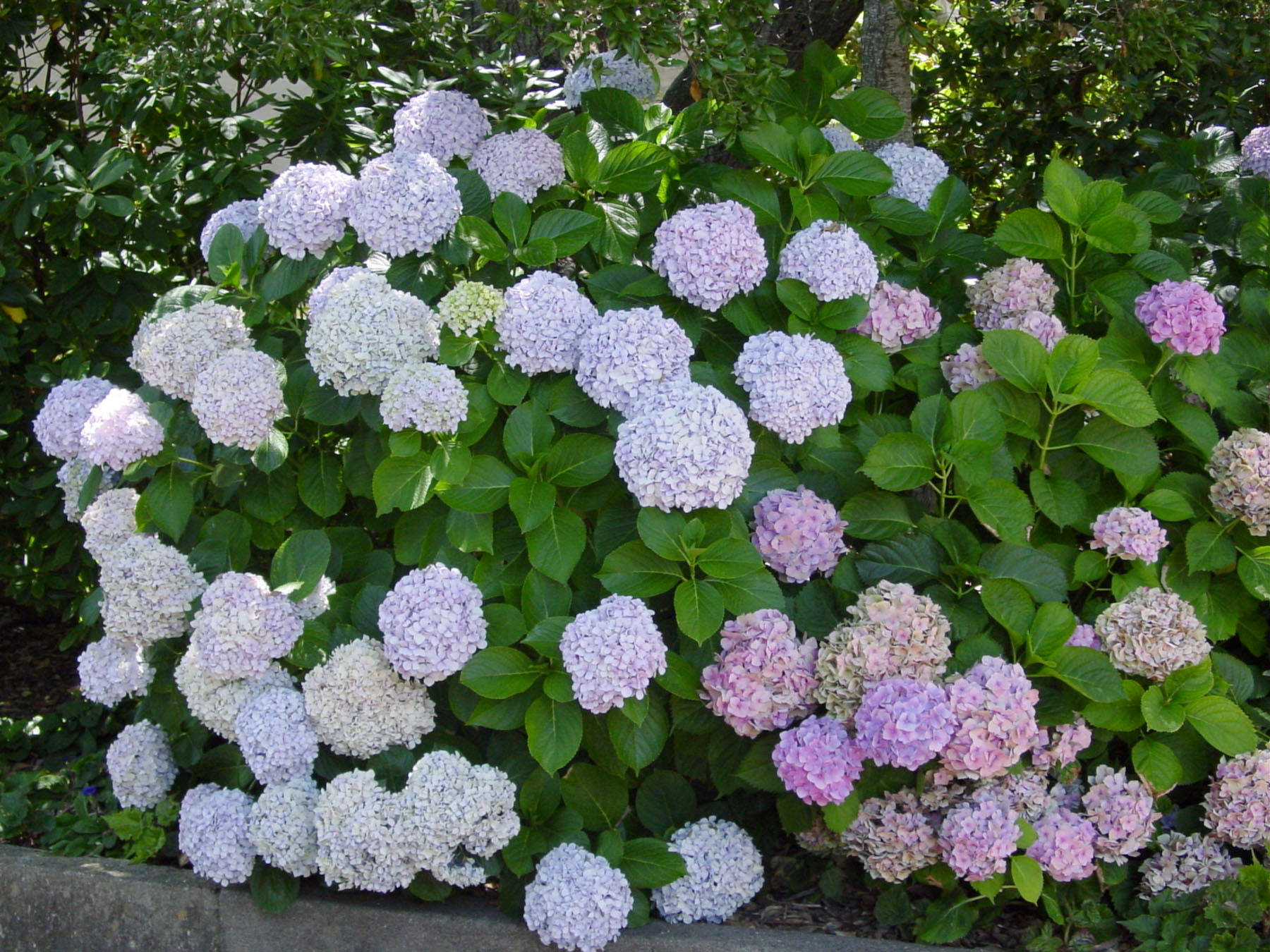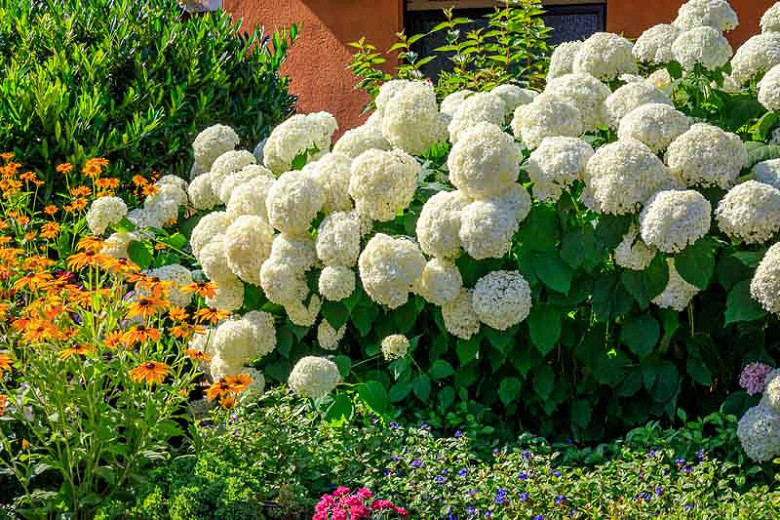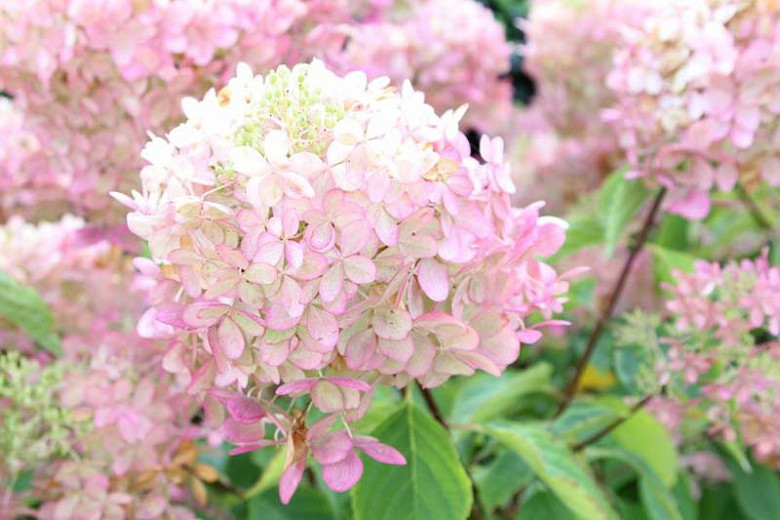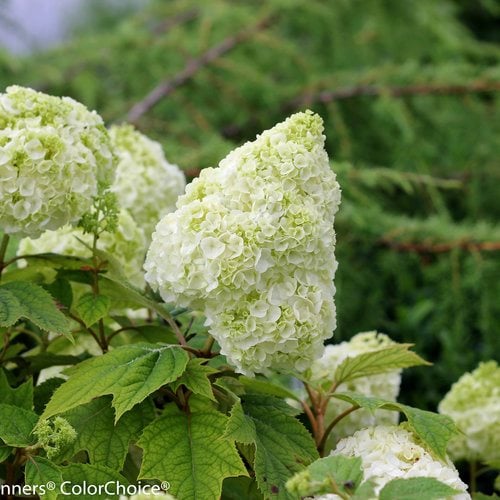How To Grow A Hydrangea Garden That Will Take Your Breath Away
How to Grow a Hydrangea Garden That Will Take Your Breath Away
Hydrangeas are some of the most beautiful and versatile flowers in the world. With their large, colorful blooms, they can add a touch of elegance to any garden. And with so many different varieties to choose from, there's a hydrangea perfect for every climate and growing condition.
If you're dreaming of a hydrangea garden that will take your breath away, here are a few tips to get you started:
1. Choose the right location
The best place to plant hydrangeas is in a spot that receives morning sun and afternoon shade. This will help to prevent the blooms from fading in the hot afternoon sun. If you live in a hot climate, you may need to provide even more shade.
2. Prepare the soil
Hydrangeas prefer well-drained soil that is rich in organic matter. Before planting, amend the soil with compost or manure. You may also need to add some sand to improve drainage.
3. Plant at the right depth
Hydrangeas should be planted at the same depth they were growing in the container. If you plant them too deeply, they may not bloom well.
4. Water regularly
Hydrangeas need regular watering, especially during the first year after planting. Once they are established, they can tolerate some drought, but they will still appreciate a deep watering once a week.
5. Fertilize in spring
Fertilize hydrangeas in spring with a balanced fertilizer. You can use a slow-release fertilizer or a liquid fertilizer.
6. Protect from pests and diseases
Hydrangeas are relatively pest- and disease-resistant, but they can be susceptible to powdery mildew. If you see any signs of pests or diseases, treat them immediately.
7. Deadhead spent blooms
Deadheading spent blooms will encourage new blooms to form. You can also prune hydrangeas in late winter or early spring to shape them and remove any dead or damaged branches.
With a little care and attention, you can easily grow a hydrangea garden that will take your breath away. Just follow these tips and you'll be well on your way to hydrangea success.
Here are some additional tips for growing a hydrangea garden:
- Choose a variety of hydrangeas with different bloom times so you can enjoy flowers all season long.
- Group hydrangeas together by color for a dramatic effect.
- Use hydrangeas to create a focal point in your garden, such as by planting them near a doorway or patio.
- Pair hydrangeas with other flowering shrubs and perennials for a colorful and complementary display.
- Use hydrangeas as cut flowers to bring the beauty of your garden indoors.
With a little planning and effort, you can create a hydrangea garden that will be the envy of your neighbors. So what are you waiting for? Get started today!
If you're looking for a beautiful and inspiring place to see hydrangeas in bloom, you need to visit . This website features a gallery of stunning photos of hydrangea gardens from all over the world. You'll see everything from small backyard gardens to large public displays.
In addition to the photos, the website also provides detailed information about different types of hydrangeas, as well as tips on how to care for them. Whether you're a gardening novice or a seasoned pro, you're sure to find something useful on this website.
So what are you waiting for? Visit today and start planning your next hydrangea garden adventure!
FAQ of hydrangea garden
Here are the 5 most frequently asked questions about hydrangea garden, along with valuable insights and solutions:
1. What are the different types of hydrangeas?
There are over 70 species of hydrangeas, but the most common ones grown in gardens are:
- Bigleaf hydrangea (Hydrangea macrophylla): This type of hydrangea has large, showy blooms that can be blue, pink, or white. It is the most popular type of hydrangea and is hardy in USDA zones 5-9.

- Smooth hydrangea (Hydrangea arborescens): This type of hydrangea has smaller, white blooms that are produced in clusters. It is hardy in USDA zones 3-9 and is a good choice for smaller gardens.

- Panicle hydrangea (Hydrangea paniculata): This type of hydrangea has tall, airy panicles of white, pink, or blue flowers. It is hardy in USDA zones 3-8 and is a good choice for sunny locations.

- Oakleaf hydrangea (Hydrangea quercifolia): This type of hydrangea has large, oak-shaped leaves and produces clusters of white or pink flowers. It is hardy in USDA zones 5-9 and prefers partial shade.

- Evergreen hydrangea (Hydrangea serrata): This type of hydrangea is evergreen in mild climates and produces white, pink, or blue flowers. It is hardy in USDA zones 6-9 and prefers partial shade.

2. How do I care for hydrangeas?
Hydrangeas are relatively easy to care for, but they do require some basic care to thrive. Here are some tips:
- Plant hydrangeas in well-drained soil.
- Water hydrangeas regularly, especially during hot, dry weather.
- Feed hydrangeas with a balanced fertilizer in the spring.
- Prune hydrangeas in the spring, after they have finished blooming.
- Protect hydrangeas from winter frost by covering them with a burlap sack or other protective material.
3. Why are my hydrangeas not blooming?
There are a few reasons why your hydrangeas might not be blooming. Here are some of the most common reasons:
- The plant is not getting enough sunlight. Hydrangeas need at least 6 hours of sunlight per day to bloom.
- The plant is not getting enough water. Hydrangeas need to be watered regularly, especially during hot, dry weather.
- The plant is not getting enough fertilizer. Hydrangeas need to be fertilized in the spring with a balanced fertilizer.
- The plant is not getting enough winter chill. Some types of hydrangeas, such as bigleaf hydrangeas, need a certain amount of winter chill to bloom. If you live in a warm climate, you may need to bring your hydrangeas indoors during the winter.
4. How do I change the color of my hydrangeas?
The color of hydrangea blooms is determined by the acidity of the soil. In alkaline soil, hydrangeas will bloom blue. In acidic soil, hydrangeas will bloom pink. You can change the color of your hydrangeas by adjusting the acidity of the soil. To make the soil more acidic, add sulfur or peat moss to the soil. To make the soil more alkaline, add lime.
5. What are some common pests and diseases that affect hydrangeas?
The most common pests that affect hydrangeas are aphids, spider mites, and scale. The most common diseases that affect hydrangeas are leaf spot, powdery mildew, and verticillium wilt. If you notice any pests or diseases on your hydrangeas, you can treat them with insecticidal soap, neem oil, or fungicide.
Image of hydrangea garden
- A white hydrangea bush in full bloom, surrounded by lush green foliage.

- A row of hydrangea bushes in shades of blue, pink, and white, planted along a walkway.
- A hydrangea garden with a variety of different hydrangea plants, including mophead, lacecap, and oakleaf hydrangeas.
- A hydrangea garden under a canopy of trees, with the flowers reflecting in a pond.

- A hydrangea garden in a cottage style setting, with flowers in white, pink, and blue.
Post a Comment for "How To Grow A Hydrangea Garden That Will Take Your Breath Away"